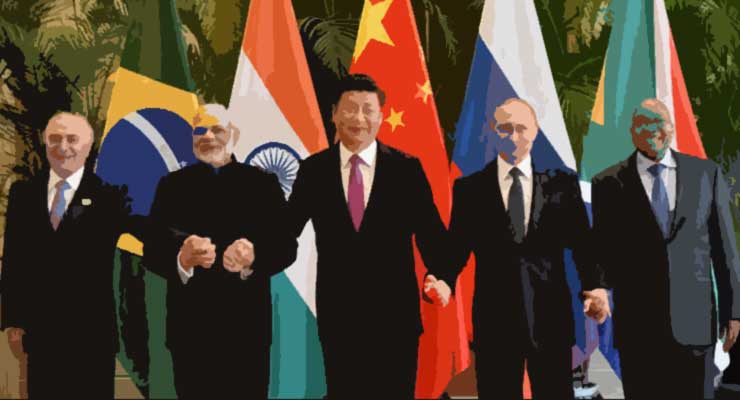
Trumpism can be characterized as an extension of the right-wing extremism preexisting in Europe. In fact, the rhetoric and language of the political discourse that shapes and informs Trump’s presidential choices are directly from the European far right.
Theoretically, however, Trump has relied on exploiting internal conflicts distinctly embedded in American history and culture — namely racism, white supremacy, and anti-immigrant sentiment — to claim this foreign movement. The concept of building a wall on the Mexican border, for example, is a platform policy the radical right has long carried in the United States.
But Trump is not just actualizing or enabling already held sentiments, he is also expanding on such notions by fabricating a distinct American ideology that explicitly borrows from politics in Europe.
Trump’s attention to Syrian refugees in the middle of his campaign is the primary stance that speaks to this phenomenon. Before Trump had delivered a speech on the issue and made it front and center of his race, there had been little debate over refugees entering the United States and even less concern over the security risk they bring.
In fact, by August of 2016, when Trump had ignited the topic, only 8,000 Syrian refugees had been allowed entry to the United States—significantly less than the hundreds of thousands that had fled to Europe and neighboring countries in the Middle East. Speaking up about the refugee issue, thus, had little actual value other than signaling to the world that he is actively aligning with an international movement towards white nationalism.
Even Trump picking Steven Bannon as a White House strategist on the National Security Council reveals this penchant for far-right politics. Bannon is publicly and enthusiastically in favor of creating an international coalition composed of right-wing radicals. As former head of the website Breitbart News, he was dedicated to covering right-wing movements in Europe and anti-immigration trends.
Meanwhile, Trump’s public admiration and romanticizing of Putin’s human right violations further expose the white nationalistic interests of Trump as leader of the free world.
The culmination of this far-right trajectory is in Trump’s latest anti-refugee and anti-immigration executive order. The policy has no strong evidence of preventing acts of terror, since the seven countries listed have no ties in generating citizens engaged in prior attacks on the United States. Arguably, the countries are listed based on convenience—governments that are either national foes or too warped in conflicts and turmoil to protest.
Perhaps most disheartening was the fact the order initially applied to green-card holders who had lived in the United States and contributed to the American system economically and occupationally. And so, instead of attempting to represent all Americans of diverse background or the general national interests of Americans, Trump is using his presidency to showcase an unfortunate commitment to international far-right movements.
As National Front party candidate Marine Le Pen strikes “globalization” and “Islamic fundamentalism” as the “two totalitarianisms” in a speech that formally launches her campaign to become President of France, we are reminded of President Donald Trump’s own ideology. Moving forward, it can be argued that Trump has not only borrowed from an international far-rights movement, but has emboldened it himself—giving it both oxygen and energy through the vigor of dangerous validation. The cyclic impact his presidency’s embrace of such stances can bring to the movement is yet to be seen.
Leave a Reply